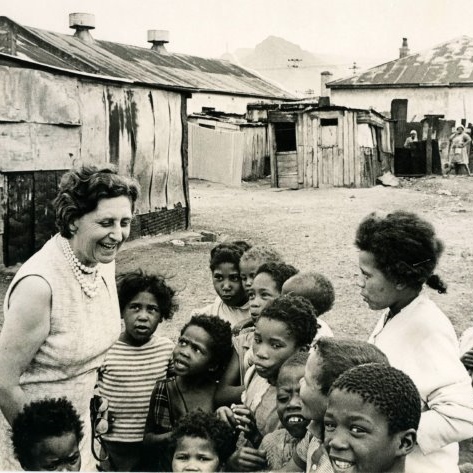click to dowload our latest edition
CLICK HERE TO SUBSCRIBE TO OUR NEWSLETTER


Published
6 years agoon
By
adminMOIRA SCHNEIDER
From 1958, Selibowitz taught literacy in District Six every Saturday morning for three years, first as a high school student and later while training to be a teacher.
Memories of those far-off days came flooding back as she wandered through the exhibition, Touching Lives: the SHAWCO Story, 1943-2018, currently on at the South African Jewish Museum in Cape Town. The exhibition will run until the end of September.
SHAWCO had its beginnings in 1942, when UCT medical student Andrew Kinnear spent his vacation driving an ambulance in Windermere (now Kensington) to pay for his studies. He was appalled by the poverty and the lack of hygiene and medical facilities in the area, and was determined to do something about it.
Kinnear asked Dr Golda Selzer of the Pathology Department at Groote Schuur Hospital to assist him in establishing a clinic there. “I said: ‘Sure we will,’” she recalled later.
So, on a winter’s night in July 1943, the first eight UCT medical student volunteers saw eight patients. Kinnear remembers: “The effort and sacrifice of these students was incredible. The only financial aid was £100 worth of drugs. The students used their own instruments and initiative, helped by a few doctors who shared their keenness.
“Dr Selzer was one of these, and it is very much due to her faith in the students, and her advice and criticism, that the clinic became established.”
Selzer became a co-founder of SHAWCO and remained its honorary life president until her death in 1999. Having graduated from UCT in 1932, she had married legendary physician Professor Frank Forman in 1934.
The couple visited Israel frequently and relocated there in 1971 after retiring.
“The unique feature is that the entire project, since its earliest days, has been the responsibility and achievement of students of the University of Cape Town,” said Selzer in 1963. Students have kept it viable since World War II, as well as during apartheid and post-1994.
As a member of the Union of Jewish Women (UJW), Selzer enlisted its support as one of SHAWCO’s first partners. In 1941, the UJW established a milk depot for mothers and children at Windermere.
The next year, it founded the Kensington crèche, which was to become one of its largest and longest-lasting projects. It was established “for the children of non-European working mothers”, securing donations of food and clothing, while SHAWCO member Dr Dorothy Chanock attended to the needs of the children.
Within two years, an inspector from the Department of Social Welfare described the crèche as “a veritable oasis amidst the surrounding squalor and dirt”. Its success led the UJW to establish a further three crèches: in Elsies River (1973), Manenberg (1984) and Khayelitsha (1990).
As a child, former finance minister Trevor Manuel attended the Kensington crèche, which remains a UJW project to this day.
Gavin Morris, director of the South African Jewish Museum, said the idea behind holding the exhibition was to extend the museum’s reach into the wider community, so as to include a broader demographic. “One of the things we want to do is to bring many different people into the museum to hear our story. SHAWCO is a perfect opportunity because it’s an organisation that’s not Jewish, but has massive Jewish connections from its origins until today.
“It’s an opportunity for the museum to open its doors to a lot of people who may not have chosen to come here but have an affinity with SHAWCO – and they’ll have the opportunity to learn about our community.”
Gavin Joachims, the director of SHAWCO, knows first-hand about the organisation he leads, having spent much of his childhood at the Elsies River crèche as a “SHAWCO kid”.
“It never crossed my mind, all those years ago, that one day I would be the director,” he told the SA Jewish Report prior to the opening of the exhibition.
Joachims describes SHAWCO today as “a very different animal”, operating in the fields of health, education and social entrepreneurship. The health programme, still its flagship programme, services about 5 000 patients a year in the Cape Town metropole and the rural Eastern and Western Cape.
Its mobile clinics provide primary healthcare services, including vaccination, pap smears, health promotion and free basic medication.
Its education programme provides services to 1 300 children from Grades R to 11, at 14 sites throughout the Cape Town metropole. This includes homework support and a structured curriculum focusing on numeracy and literacy, on a daily basis after school and on Saturday mornings. The children also have exposure to leadership development, sport and cultural activities, he says.
An academic intervention programme focuses on tuition for pupils in Grades 10 to 12 in the subjects of maths, physical science, accounting, English and life sciences. The programme is attended by more than 500 pupils, and is presented at UCT every Saturday morning by top educators.
All of which must surely have been beyond the wildest imaginings of SHAWCO’s early founders.
